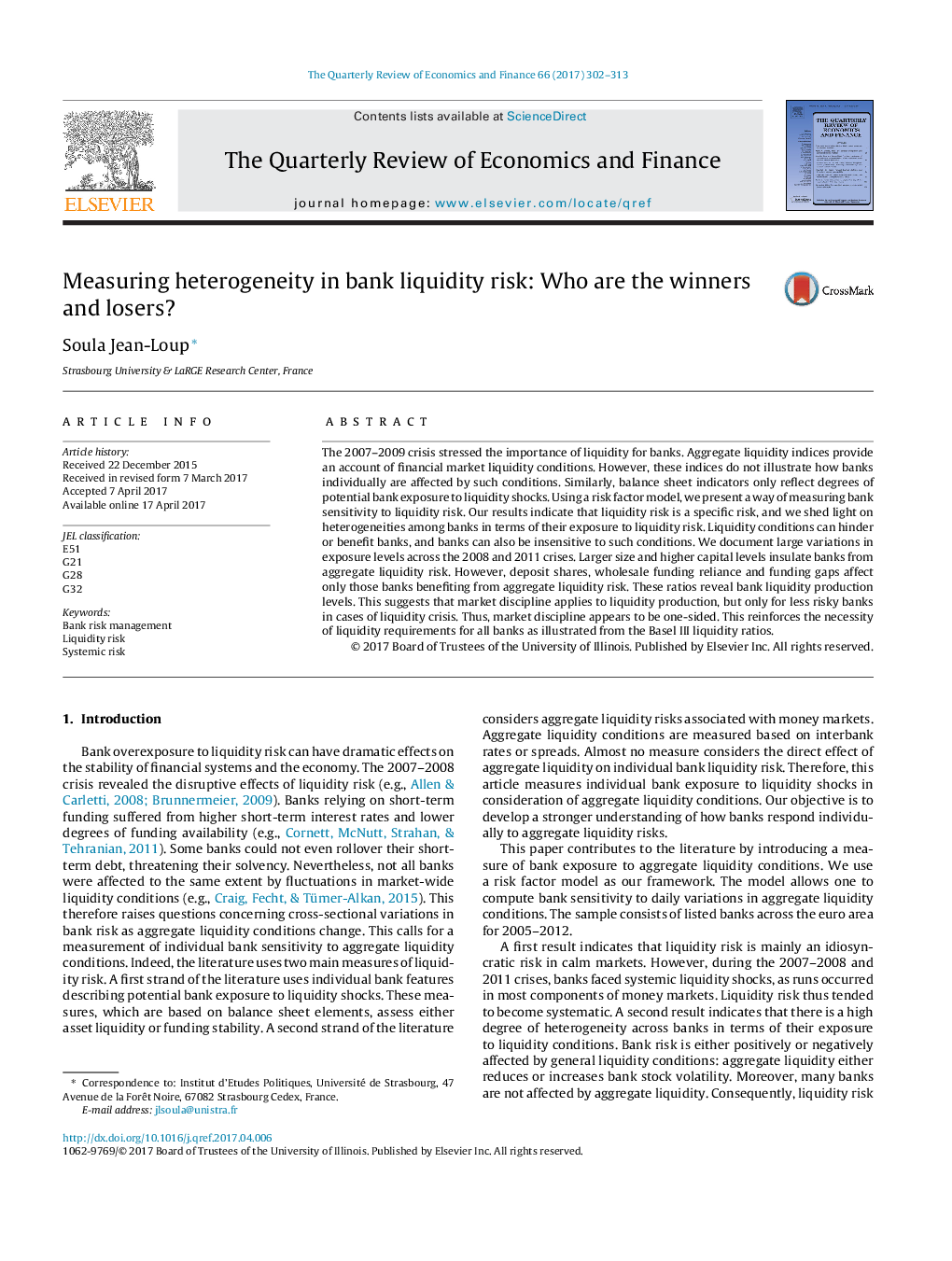| کد مقاله | کد نشریه | سال انتشار | مقاله انگلیسی | نسخه تمام متن |
|---|---|---|---|---|
| 7383579 | 1480434 | 2017 | 12 صفحه PDF | دانلود رایگان |
عنوان انگلیسی مقاله ISI
Measuring heterogeneity in bank liquidity risk: Who are the winners and losers?
ترجمه فارسی عنوان
اندازه گیری ناهمگونی در خطرات نقدینگی بانکی: چه کسی برنده و بازنده است؟
دانلود مقاله + سفارش ترجمه
دانلود مقاله ISI انگلیسی
رایگان برای ایرانیان
موضوعات مرتبط
علوم انسانی و اجتماعی
اقتصاد، اقتصادسنجی و امور مالی
اقتصاد و اقتصادسنجی
چکیده انگلیسی
The 2007-2009 crisis stressed the importance of liquidity for banks. Aggregate liquidity indices provide an account of financial market liquidity conditions. However, these indices do not illustrate how banks individually are affected by such conditions. Similarly, balance sheet indicators only reflect degrees of potential bank exposure to liquidity shocks. Using a risk factor model, we present a way of measuring bank sensitivity to liquidity risk. Our results indicate that liquidity risk is a specific risk, and we shed light on heterogeneities among banks in terms of their exposure to liquidity risk. Liquidity conditions can hinder or benefit banks, and banks can also be insensitive to such conditions. We document large variations in exposure levels across the 2008 and 2011 crises. Larger size and higher capital levels insulate banks from aggregate liquidity risk. However, deposit shares, wholesale funding reliance and funding gaps affect only those banks benefiting from aggregate liquidity risk. These ratios reveal bank liquidity production levels. This suggests that market discipline applies to liquidity production, but only for less risky banks in cases of liquidity crisis. Thus, market discipline appears to be one-sided. This reinforces the necessity of liquidity requirements for all banks as illustrated from the Basel III liquidity ratios.
ناشر
Database: Elsevier - ScienceDirect (ساینس دایرکت)
Journal: The Quarterly Review of Economics and Finance - Volume 66, November 2017, Pages 302-313
Journal: The Quarterly Review of Economics and Finance - Volume 66, November 2017, Pages 302-313
نویسندگان
Soula Jean-Loup,
